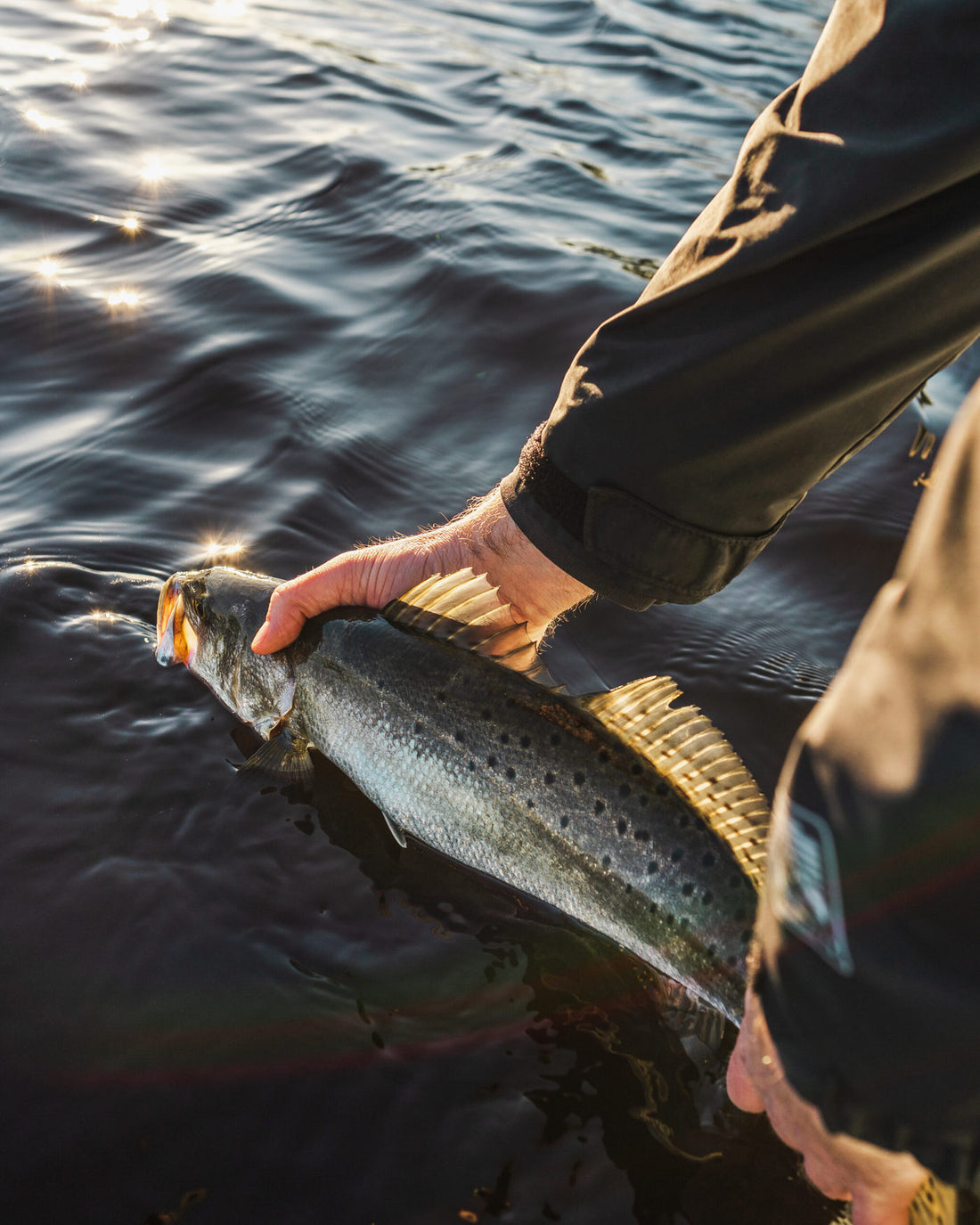Speckled Trout are inshore saltwater gamefish that checks all of the boxes when it comes to saltwater fly fishing. They are ferocious predators that strike aggressively, are widely accessible throughout the United States, great table fare, and most importantly, they will absolutely demolish a fly presentation.
These fish can be caught anywhere from Virginia all the way to the gulf coast of Texas, and be caught using a variety of different presentations.
Speckled Trout Season
November is an excellent month to target speckled trout, as they are aggressively feeding while they migrate or prepare for the upcoming winter. Learning to decipher the code on speckled trout is both challenging and rewarding.
November is a great time of year to find speckled trout in the salt marshes inside of the oceanside inlets along the East Coast. Targeting the shallows in close proximity to a larger body of water or channel are excellent places to look.
Where To Look
Moving water over top of sand or hard bottom are key to finding schools of fish this time of year. Although speckled trout are part of the drum family and not related to trout, similar to trout, they still seek structure or variation in the shoreline or bottom contours to look for breaks in the current. Even though speckled trout are aggressive feeders, they still try to position themselves in ways that bait will come to them to ambush. Identifying a stretch of water that has oyster beds, docks, or other visible structure are key areas to find them.
- Oyster beds
- Docks
- Visible structure
Finding a shallow flat near a boating channel that has oyster beds and varies from two to four feet of water is one of my favorite places to look. Key tip, if you’ve identified a place similar to that, go check it out at low tide so you can get a feel for what may be in the area that is not visible when the tide is high. You may be able to identify an oyster bed that wasn't marked or some small ledges where fish could hold.
Once you’ve keyed in on an area to target it is time to attack! But do so, quietly and observantly. Pay attention to the flow of the water and lookout for signs of bait moving or even flying out of the water in a panic. If you are able to fish from a boat, canoe, or kayak, utilizing the wind and current to set up a drift over this section is a good way to dissect the area and find fish.
Keying in on the structure is an easy way to find fish. Speckled trout will typically sit on the downside of the current behind structure waiting for baitfish to wash over or past them for an easy meal. Making a cast allowing the fly to swim over an oyster bed or just past the sides of the oyster bed should trigger a strike.
Now that we’ve gotten all of that out of the way, here comes the fun part about targeting speckled trout; figuring out your retrieve depth and cadence to trigger a strike. Depending on the day and conditions, speckled trout can be found towards the surface, suspended in the water column, or tight to the bottom.
How To Fish
The most common type of retrieve for speckled trout is using a strip, strip, pause method. The speed of the strip and length of the pause are up to you, and ultimately what can allow you to figure out where the fish are in the water column and what type of retrieve speed they are looking to attack. Typically, where there is one fish there is another, and oftentimes a bunch of fish. Figuring out the retrieve and depth will allow you to almost anticipate the bite.
Speck Flies
Speckled trout primarily feed on baitfish, namely mullet, so flies that can imitate the darting action of a mullet will be great. Fly patterns with dumbbell eyes or weight towards the head that you can jig are great for specks; Clouser Minnows are a winner. Good color combos are purple and black, and pink and chartreuse. Shrimp and crab presentations can work as well if the fish are holding towards the bottom and favoring a slower retrieve.
Typically, a fly 3-4 inches in length will get the job done, but don’t be afraid to throw a little larger. As stated before, larger speckled trout are smart and opportunistic. They usually won’t turn down a chance to eat one large meal instead of multiple small meals. In this sense, they are very similar to freshwater trout species.
Fly Rod Weight
These fish have very soft mouths and shake their heads violently when hooked, it is vital to have a rod and reel setup that has the backbone to handle a larger fish, but is sensitive enough to withstand the head shakes of large speckled trout, 6-8 weights work well. Too much tension and stiffness will cause the hook to tear the fish's mouth and any lapse in tension will result in losing the fish.
Solving the puzzle of the speckled trout is a fun, frustrating, and ever-changing journey, but when you can put the pieces in place fishing for these fish is as fun as it gets. Not to mention, the first time you have a large trout smack your fly and shake its head like a sailfish you will be hooked for life.


